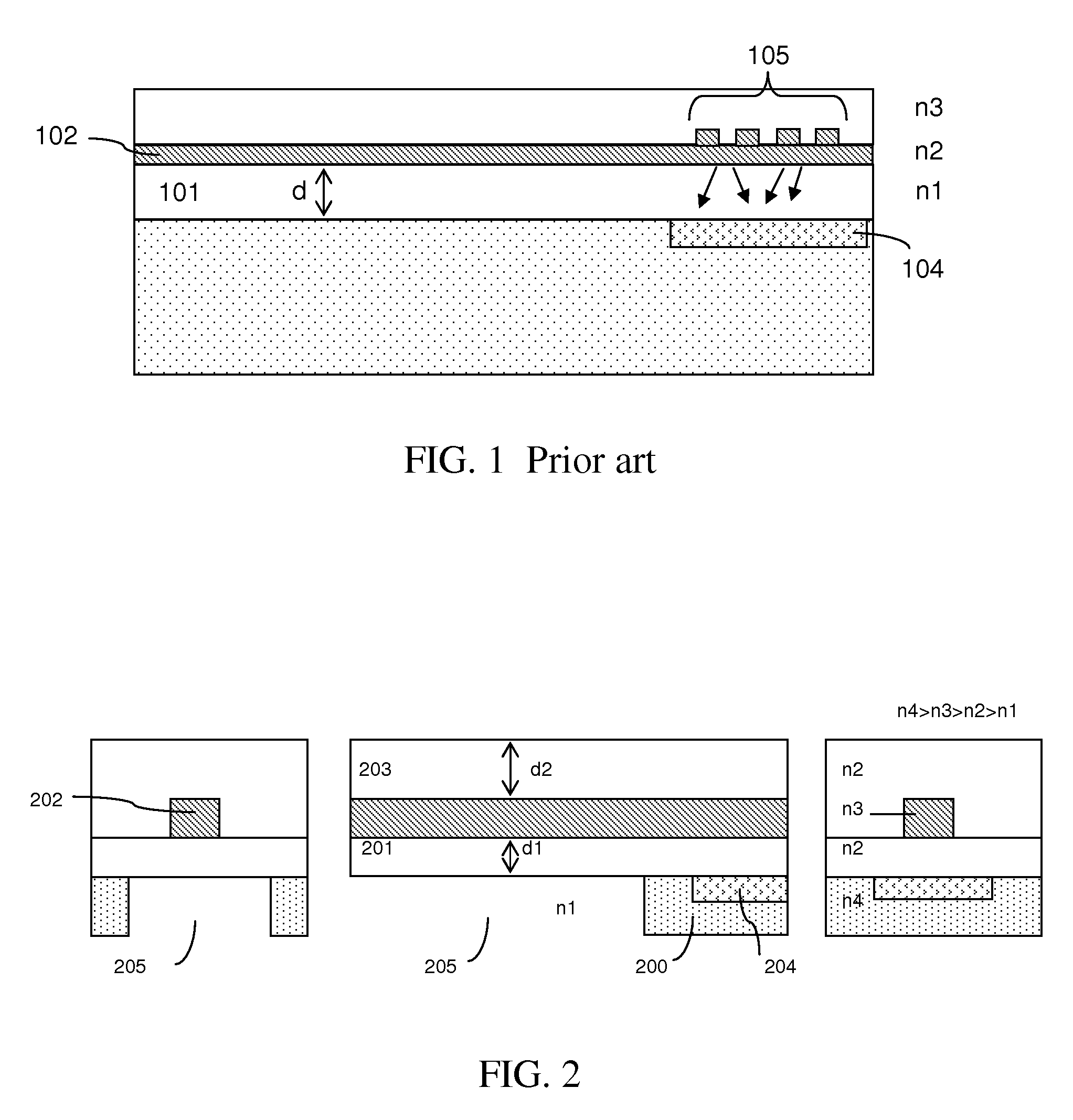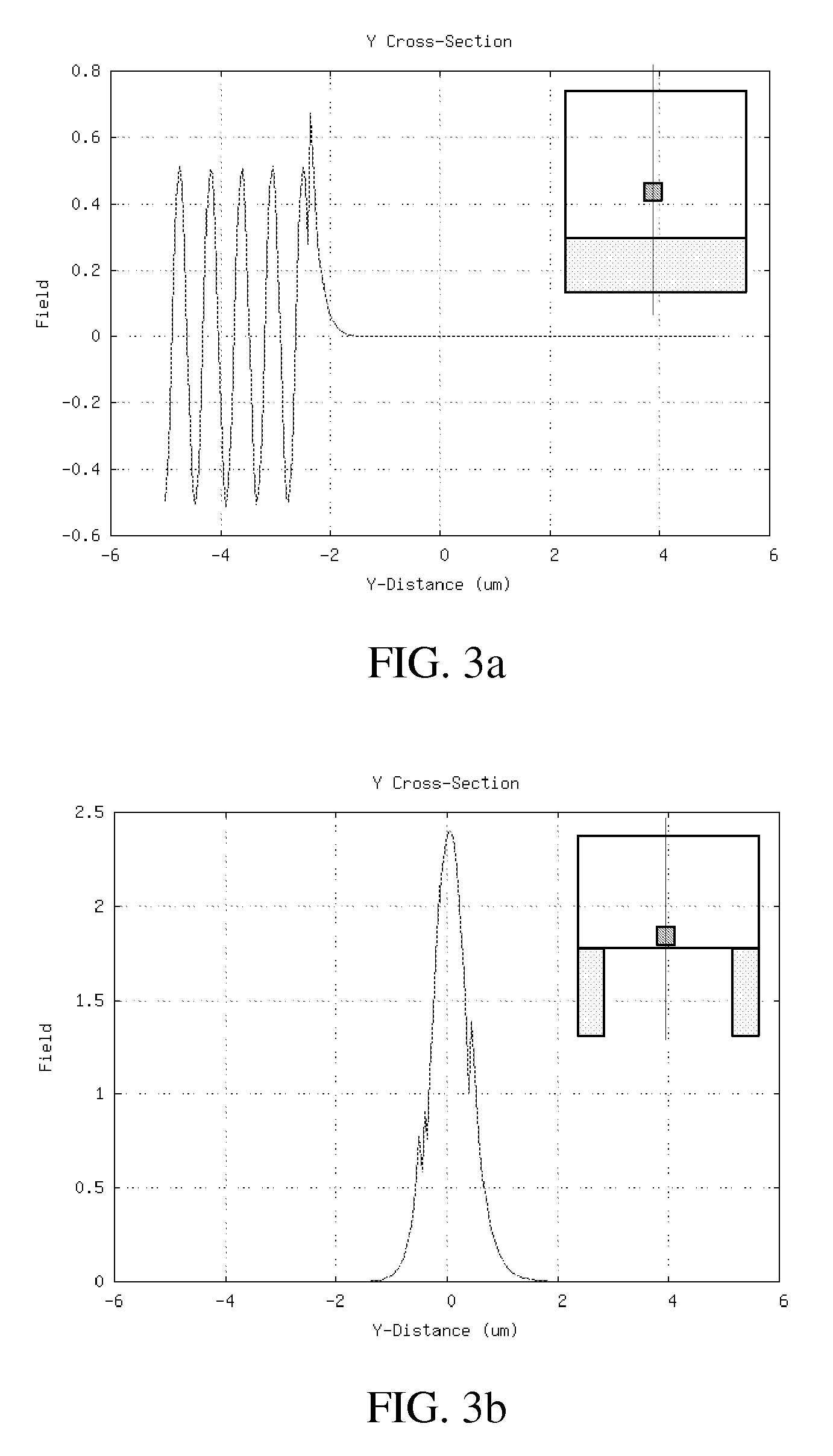Planar lightwave circuits with air filled trenches
a technology of lightwave circuits and air filled trenches, applied in nanotechnology, instruments, nanotechnology, etc., can solve problems such as air filled trenches, and achieve the effect of easy integration of photonic and electronic components
- Summary
- Abstract
- Description
- Claims
- Application Information
AI Technical Summary
Benefits of technology
Problems solved by technology
Method used
Image
Examples
Embodiment Construction
[0033]The preferred embodiments of the present invention disclose methods to reduce optical propagation loss, as well as, making it simpler to integrate waveguides to other on-chip functions, and to electronic circuits. On-chip functions can be photodetectors, tuning devices, modulator devices, dispersion compensation devices, etc. An embodiment of the present invention relates to the methods to reduce propagation loss due to evanescent coupling to the substrate by selectively etching away the substrate under the waveguides, thus leaving air filled trenches. Examples of how the preferred embodiments can improve the coupling efficient to the photodetectors, can improve the performances of waveguides to on-chip devices that utilized semiconductor-on-insulator substrate, can reduce losses in both photonic and electronic circuits, and can improve the sensitivity of an optical sensor will be highlighted.
[0034]It should be clear to those experienced in the art that the present invention c...
PUM
 Login to View More
Login to View More Abstract
Description
Claims
Application Information
 Login to View More
Login to View More - R&D
- Intellectual Property
- Life Sciences
- Materials
- Tech Scout
- Unparalleled Data Quality
- Higher Quality Content
- 60% Fewer Hallucinations
Browse by: Latest US Patents, China's latest patents, Technical Efficacy Thesaurus, Application Domain, Technology Topic, Popular Technical Reports.
© 2025 PatSnap. All rights reserved.Legal|Privacy policy|Modern Slavery Act Transparency Statement|Sitemap|About US| Contact US: help@patsnap.com



